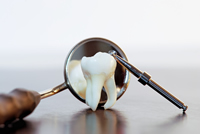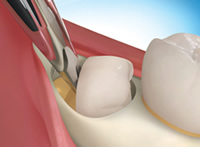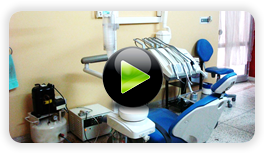Many people require removal of their third molars also known as wisdom teeth. As with any surgical procedure, there are some possible risks and complications. The decision on third molar removal should be decided by a patient and their dentist.
Is it necessary to remove wisdom teeth?
 Wisdom teeth are a valuable asset to the mouth when they are healthy and properly positioned. Often, however, problems develop that require their removal. When the jaw isn’t large enough to accommodate wisdom teeth, they can become impacted (unable to come in or misaligned) Wisdom teeth may grow sideways, emerge only part way through the gum or remain trapped beneath the gum and bone.
Wisdom teeth are a valuable asset to the mouth when they are healthy and properly positioned. Often, however, problems develop that require their removal. When the jaw isn’t large enough to accommodate wisdom teeth, they can become impacted (unable to come in or misaligned) Wisdom teeth may grow sideways, emerge only part way through the gum or remain trapped beneath the gum and bone.
Extraction of third molars is generally recommended:
- When wisdom teeth only partially erupt;
- When there is a chance that poorly aligned wisdom teeth will damage adjacent teeth;
- When a cyst (fluid-filled sac) forms, destroying surrounding structures such as bone tooth roots.
The most common reason people choose to remove their wisdom teeth is that their mouth is t too small for these teeth to normally erupt behind the second molar into a good position. This can result in one of the following situations:
- Complete Bony Impaction when the wisdom teeth are completely covered in bone. When the tooth is completely covered with bone it will remain completely covered with its "developmental sack" in which all teeth develop. Later in life, this sack may undergo changes and enlarge and develop into a cyst. This cyst will enlarge at the expense of the bone of the jaw. These cysts should be removed and and examined by a pathologist.
- Partial Bony Impaction when the teeth begin to erupt but are not able to erupt completely. In this situation, the upper third molars usually are positioned towards the cheek while the lower third molars usually lean forward with only part of the crown sticking through the gum. This situation can to decay and gum disease around the second molar directly in front of it.
The most common complication of the partial bony impaction, is that the flap of gum tissue which partially covers the erupting third molar, creates a pocket where bacteria that are present in the mouth can grow and and cause an infection known as pericoronitis. The swelling and infection can become very serious. The treatment for pericoronitis is extraction of the third molar tooth.
 Some dentists believe that wisdom teeth may push the other teeth in the mouth forward and cause crowding and misalignment of the lower front teeth. Not all dentists believe that this actually happens.
Some dentists believe that wisdom teeth may push the other teeth in the mouth forward and cause crowding and misalignment of the lower front teeth. Not all dentists believe that this actually happens.
The risks and complications involved in the removal of third molars are:
Pain –
Surgical removal of the third molars can lead to some discomfort and pain. This is usually treated with pain medication.
Infection –
Because of the large number of bacteria present in the mouth post surgical infection is always possible. Patients are usually placed on prophylactic antibiotics to prevent infections from developing.
Swelling –
Following surgery patients may experience swelling and bruising. These symptoms vary between patients.
Bleeding –
Some post surgical bleeding is considered normal. This is usually minimal and is easily controlled with the pressure of biting on gauze.
Most wisdom teeth can be removed with local anesthesia alone but many people prefer I.V. sedation during surgery.




